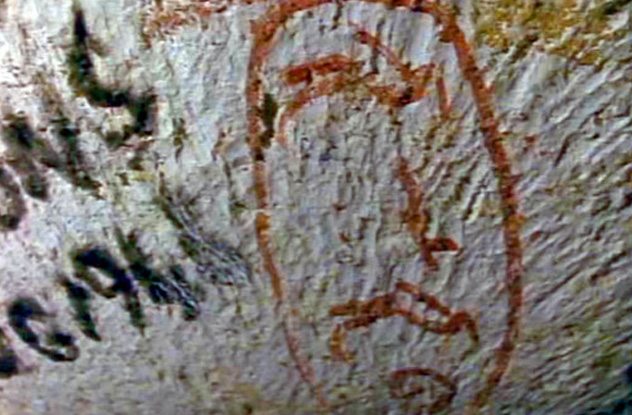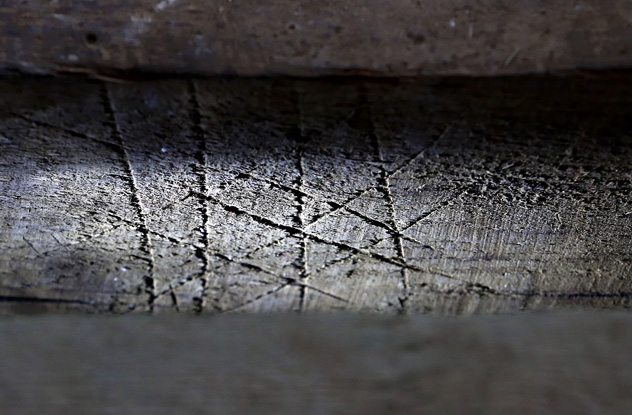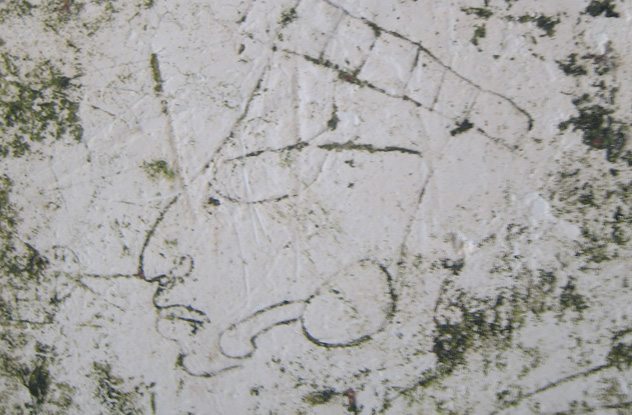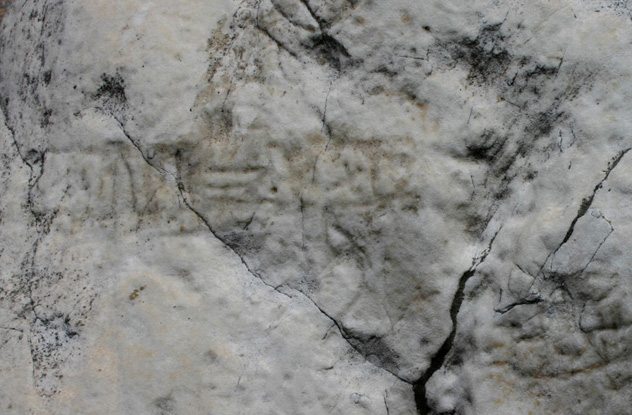5. Chinese Drought Graffiti

Not all graffiti is personal. In the Dayu Cave in the Quinling Mountains of China, there are the records of droughts suffered hundreds of years ago. When the rains failed to arrive, the local people would enter the caves to offer prayers for the end of the drought. The walls of the cave bear over 70 records of prayers offered, marked in black paint. One patch of graffiti reads "On June 8, 46th year of the emperor Kangxi period, Qing Dynasty (July 7, 1707AD), the governor of Ningqiang district came to the cave to pray for rain." Another text tells of how a fortune teller joined in the ceremony. The precise dating of the graffiti has offered scientists a window into the climatic past of the region. By studying the minerals and chemicals in formations like stalactites in the cave they were able to calculate atmospheric conditions on the surface above the cave. They found that when locals were recording a drought, oxygen and carbon dioxide levels were relatively high.
4. Hieroglyphic Graffiti

There are many mysteries surrounding the building of the pyramids in Egypt. There is still no consensus as to the exact method used to haul the blocks. We have learned that the men employed in the hauling were not slaves but hired workers. Graffiti is giving an extra insight into these men's lives. Exploration of the Great Pyramid of Giza has turned up hieroglyphic graffiti in places that no one was ever meant to see. The men building the pyramid wanted to be a permanent part of one of the Ancient Wonders of the World. In doing so, they left told us how they were organized. Then people doing the heavy lifting on the pyramid were broken into small gangs of individuals. They received, or gave themselves, names like "Perfection gang," "Great One," "Green One," and "Endurance." One in the King's burial chamber reads "The Friends of Khufu Gang," Khufu being the pharaoh that the pyramid was raised to house for all eternity. From the placing of the gang signs on opposing sides of blocks, it seems that gangs were competing with each other for prominence. Naming the gangs of workers could have been a way of the overseers to create competition and improve efficiency.
3. Witch Marks

There is a special type of graffiti meant to ward off danger. This type of protective magic symbol is called Apotropaic Magic. When you fear something is coming after you, you make a special sign in your home and it keeps them away. For the medieval mind there were few things as fearsome as the witch. Witches were scary in several ways. They were unruly women, and they had the powers of the devil at their disposal. Such symbols were commonly found in churches. Here, witch marks often took the form of daisy wheels—simple geometric designs drawn with a pair of compasses that look like flowers. Witch marks were also found in private houses. In the 17th century, King James I was convinced that witches were out to get him. At Knole House, where the king might have been expected to visit, signs were carved into the woodwork to ward off evil. V and M signs were made to invoke the Virgin Mary, and crisscross patterns were made as demon mazes—shapes meant to make evil beings get lost before they could harm visitors.
2. Mayan Graffiti

The Mayan Society of Mesoamerica lasted for millennia until the Spanish conquistadors brought about its collapse. Its cities and temples are amazing works of architecture. It was one of the great world civilizations. Its writings are an incredible source of information about this lost world. But the archaeological are also great sources of graffiti that give windows into the lives of people in this lost world. At Tikal, drawings carved into the stone show portraits, dancing figures, animals, thrones, gods, and priests. One graffito seems to show an execution: a figure stands with his arms stretched between two poles while another has just shot him with an arrow, or run him through with a spear. There are also valuable images of a procession. Men carry trumpets with ribbons streaming from them, while others follow behind. All of these details would be lost if people had not decided to deface their local monuments.
1. Piraeus Lion

Piraeus was the port of Ancient Athens. From the first or second century, it was guarded by a statue of a lion. The Piraeus Lion became so famous that the port was known as Porto Leone—the Lion Port. This statue, originally sculpted in the fourth century BC, remained in place until the 17th century when the Venetians plundered it and took it home to Venice. All that history would seem to be sufficient, but one puzzle persisted—what was the strange writing on the sides of the Lion? In the 18th century, a Swedish diplomat recognized the marks for what they were: Viking runes. The Varangian Guard had struck again. These Scandinavians had written a lengthy inscription in the shape of a dragon into the Lion's side. The runes are hard to read, but one translation of them reads as follows: "They cut him down in the midst of his forces. But in the harbor the men cut runes by the sea in memory of Horsi, a good warrior. The Swedes set this on the lion. He went his way with good counsel, gold he won in his travels. The warriors cut runes, hewed them in an ornamental scroll. Askell (and others) and Thorlaeifr had them well cut, they who lived in Roslagen. (Unreadable) son of (Unreadable) cut these runes. Ulfr and (Unreadable) colored them in memory of Horsi. He won gold in his travels."












